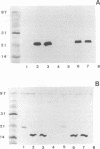Abstract
Limulus peptide C, a 28-amino-acid fragment of coagulogen formed by the reaction of endotoxin with Limulus amebocyte lysate, was synthesized, and a monoclonal antibody against it was raised. A new microassay for endotoxin was developed, using this antibody in an enzyme-linked immunosorbent assay for generated peptide C-like immunoreactivity. A linear relationship between absorbance and endotoxin concentration was obtained. Control standard endotoxin in water could be detected to a level of 0.001 endotoxin unit per ml. The endotoxin levels in plasma samples from normal humans, rabbit, mice, and guinea pigs were generally found to be below the detection limit of 0.01 endotoxin unit per ml of plasma. The color and turbidity of specimens did not interfere with the assay. The consumption of Limulus amebocyte lysate in the assay was less than 5% of that in the gel-clot and chromogenic assays. With raw lysate, which was much more stable in solution than chloroform-treated lysate, the assay was still highly sensitive to endotoxin but was totally unresponsive to natural glucans. The monoclonal antibody cross-reacted with peptide C-like immunoreactivity generated in Tachypleus amebocyte lysate, which gave equal sensitivity in the endotoxin assay.
Full text
PDF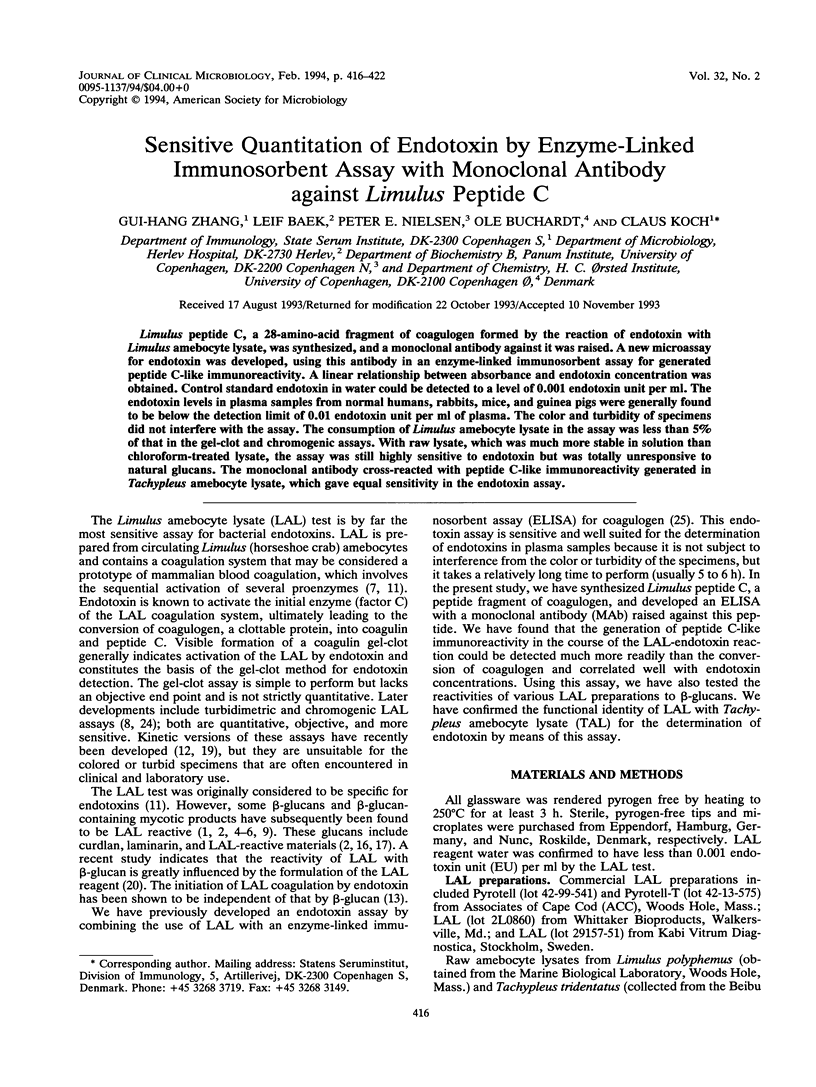

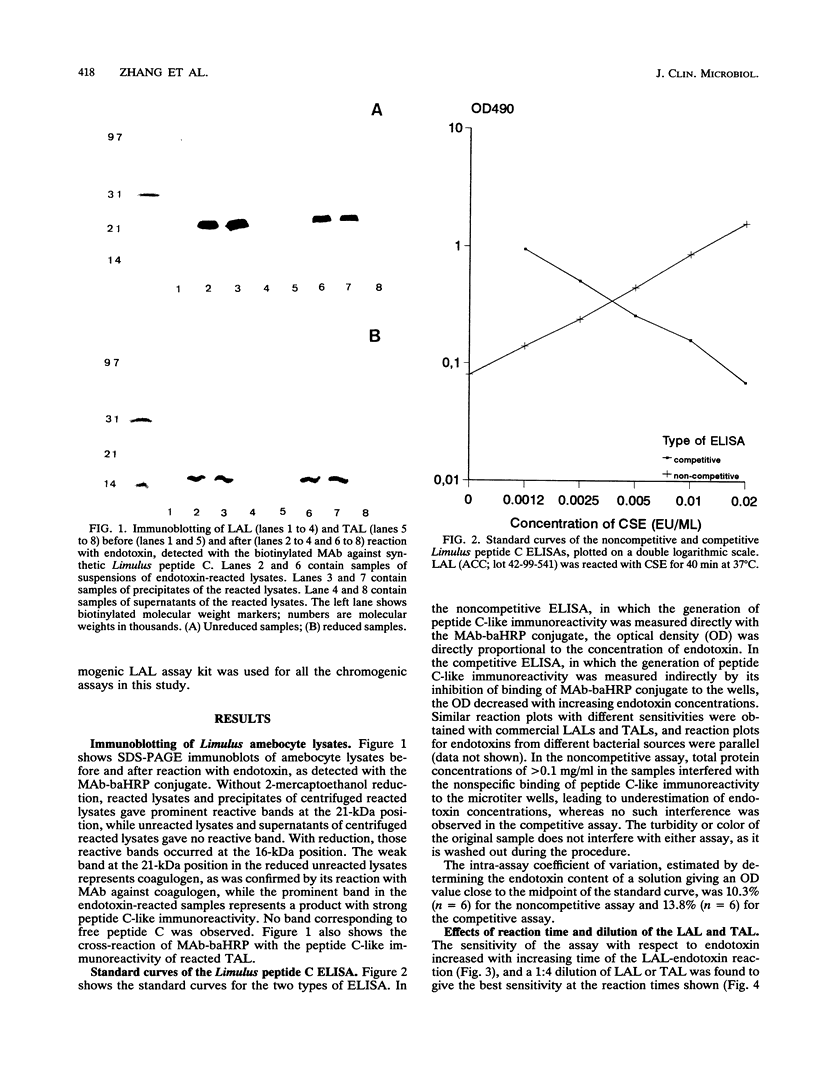
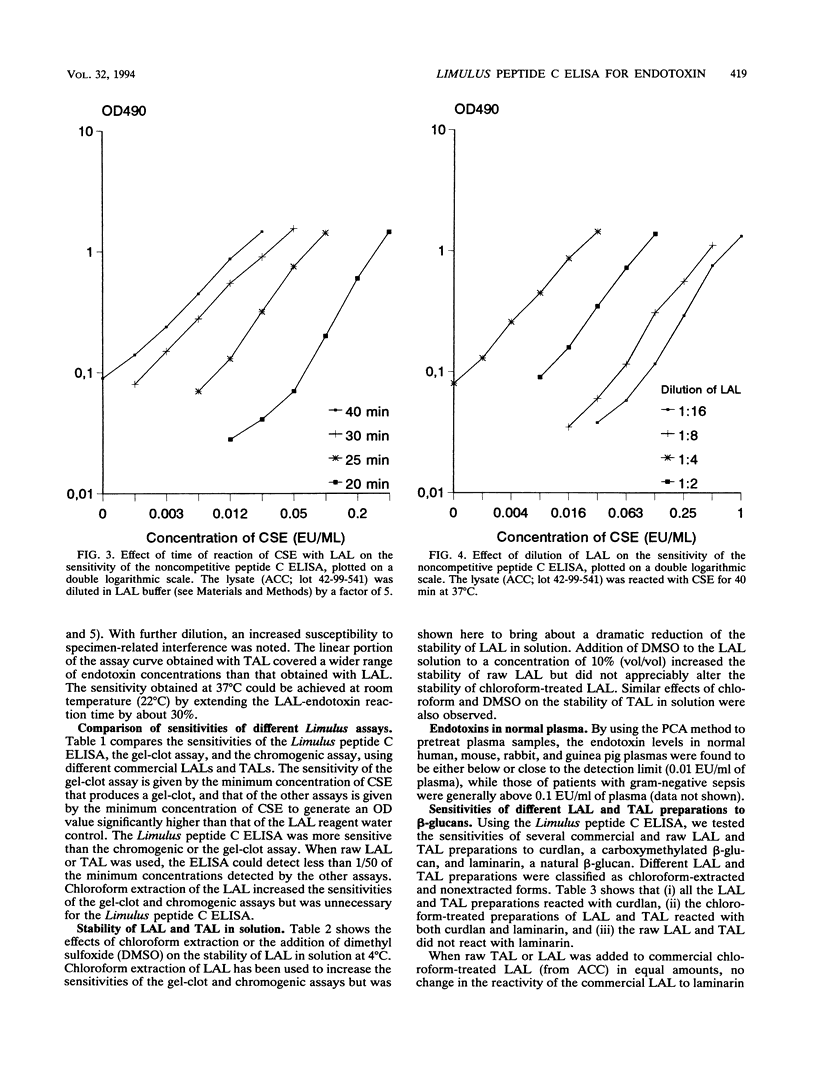
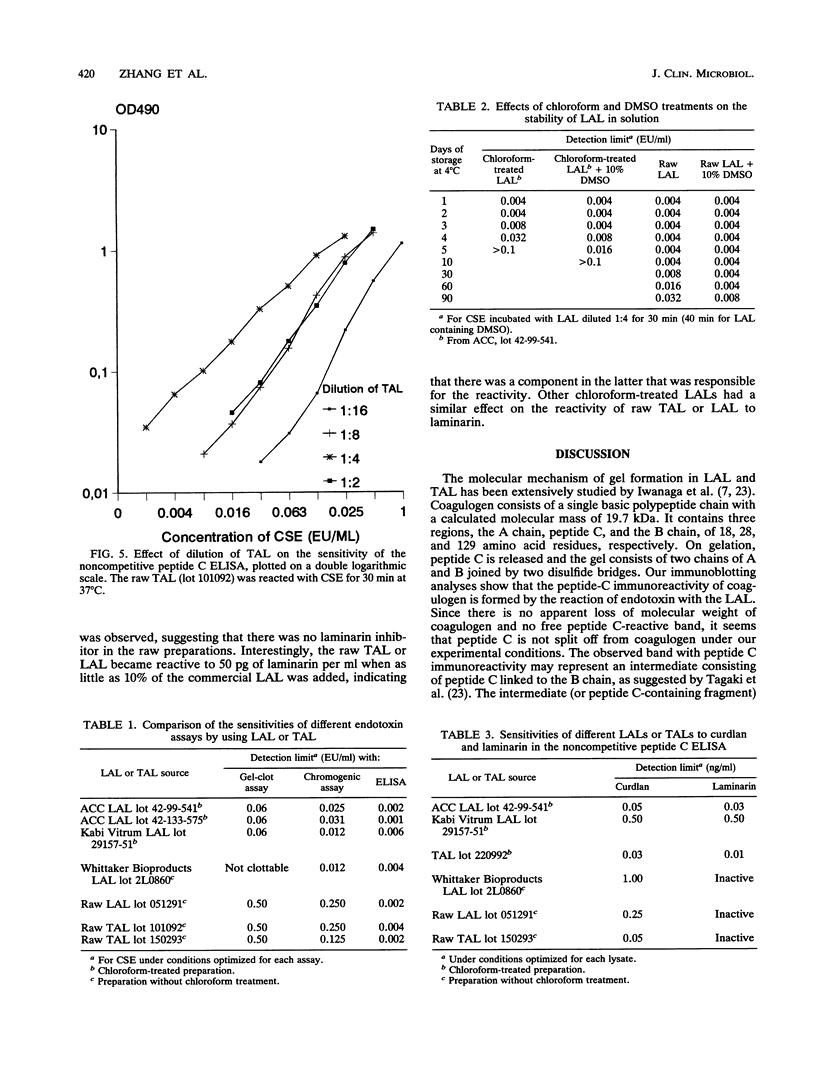
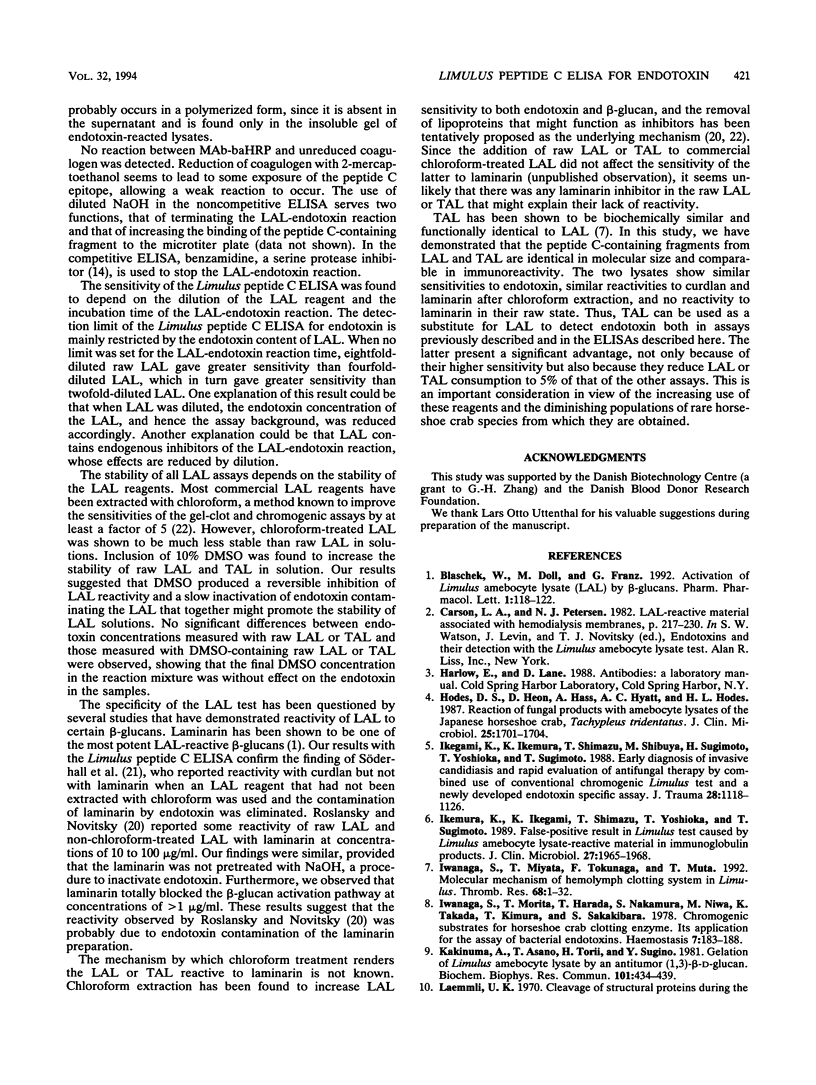
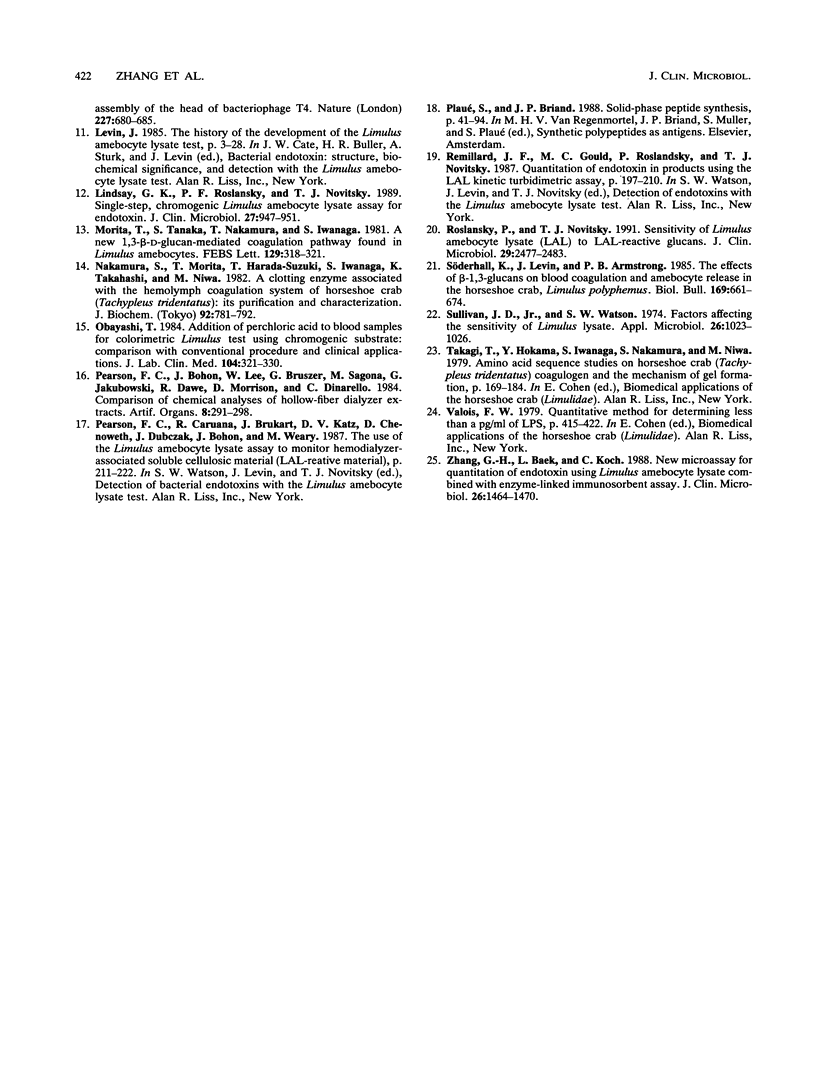
Images in this article
Selected References
These references are in PubMed. This may not be the complete list of references from this article.
- Carson L. A., Petersen N. J. LAL-reactive material associated with hemodialysis membranes. Prog Clin Biol Res. 1982;93:217–230. [PubMed] [Google Scholar]
- Hodes D. S., Heon D., Hass A., Hyatt A. C., Hodes H. L. Reaction of fungal products with amebocyte lysates of the Japanese horseshoe crab, Tachypleus tridentatus. J Clin Microbiol. 1987 Sep;25(9):1701–1704. doi: 10.1128/jcm.25.9.1701-1704.1987. [DOI] [PMC free article] [PubMed] [Google Scholar]
- Ikegami K., Ikemura K., Shimazu T., Shibuya M., Sugimoto H., Yoshioka T., Sugimoto T. Early diagnosis of invasive candidiasis and rapid evaluation of antifungal therapy by combined use of conventional chromogenic limulus test and a newly developed endotoxin specific assay. J Trauma. 1988 Aug;28(8):1118–1126. doi: 10.1097/00005373-198808000-00003. [DOI] [PubMed] [Google Scholar]
- Ikemura K., Ikegami K., Shimazu T., Yoshioka T., Sugimoto T. False-positive result in Limulus test caused by Limulus amebocyte lysate-reactive material in immunoglobulin products. J Clin Microbiol. 1989 Sep;27(9):1965–1968. doi: 10.1128/jcm.27.9.1965-1968.1989. [DOI] [PMC free article] [PubMed] [Google Scholar]
- Iwanaga S., Miyata T., Tokunaga F., Muta T. Molecular mechanism of hemolymph clotting system in Limulus. Thromb Res. 1992 Oct 1;68(1):1–32. doi: 10.1016/0049-3848(92)90124-s. [DOI] [PubMed] [Google Scholar]
- Iwanaga S., Morita T., Harada T., Nakamura S., Niwa M., Takada K., Kimura T., Sakakibara S. Chromogenic substrates for horseshoe crab clotting enzyme. Its application for the assay of bacterial endotoxins. Haemostasis. 1978;7(2-3):183–188. doi: 10.1159/000214260. [DOI] [PubMed] [Google Scholar]
- Kakinuma A., Asano T., Torii H., Sugino Y. Gelation of Limulus amoebocyte lysate by an antitumor (1 leads to 3)-beta-D-glucan. Biochem Biophys Res Commun. 1981 Jul 30;101(2):434–439. doi: 10.1016/0006-291x(81)91278-x. [DOI] [PubMed] [Google Scholar]
- Lindsay G. K., Roslansky P. F., Novitsky T. J. Single-step, chromogenic Limulus amebocyte lysate assay for endotoxin. J Clin Microbiol. 1989 May;27(5):947–951. doi: 10.1128/jcm.27.5.947-951.1989. [DOI] [PMC free article] [PubMed] [Google Scholar]
- Nakamura S., Morita T., Harada-Suzuki T., Iwanaga S., Takahashi K., Niwa M. A clotting enzyme associated with the hemolymph coagulation system of horseshoe crab (Tachypleus tridentatus): its purification and characterization. J Biochem. 1982 Sep;92(3):781–792. doi: 10.1093/oxfordjournals.jbchem.a133990. [DOI] [PubMed] [Google Scholar]
- Obayashi T. Addition of perchloric acid to blood samples for colorimetric limulus test using chromogenic substrate: comparison with conventional procedures and clinical applications. J Lab Clin Med. 1984 Sep;104(3):321–330. [PubMed] [Google Scholar]
- Pearson F. C., Bohon J., Lee W., Bruszer G., Sagona M., Dawe R., Jakubowski G., Morrison D., Dinarello C. Comparison of chemical analyses of hollow-fiber dialyzer extracts. Artif Organs. 1984 Aug;8(3):291–298. doi: 10.1111/j.1525-1594.1984.tb04293.x. [DOI] [PubMed] [Google Scholar]
- Pearson F. C., Caruana R., Burkart J., Katz D. V., Chenoweth D., Dubczak J., Bohon J., Weary M. The use of the Limulus amebocyte lysate assay to monitor hemodialyzer-associated soluble cellulosic material (LAL-reactive material). Prog Clin Biol Res. 1987;231:211–222. [PubMed] [Google Scholar]
- Remillard J. F., Gould M. C., Roslansky P. F., Novitsky T. J. Quantitation of endotoxin in products using the LAL kinetic turbidimetric assay. Prog Clin Biol Res. 1987;231:197–210. [PubMed] [Google Scholar]
- Roslansky P. F., Novitsky T. J. Sensitivity of Limulus amebocyte lysate (LAL) to LAL-reactive glucans. J Clin Microbiol. 1991 Nov;29(11):2477–2483. doi: 10.1128/jcm.29.11.2477-2483.1991. [DOI] [PMC free article] [PubMed] [Google Scholar]
- Sullivan J. D., Jr, Watson S. W. Factors affecting the sensitivity of Limulus lysate. Appl Microbiol. 1974 Dec;28(6):1023–1026. doi: 10.1128/am.28.6.1023-1026.1974. [DOI] [PMC free article] [PubMed] [Google Scholar]
- Takagi T., Hokama Y., Morita T., Iwanaga S., Nakamura S., Niwa M. Amino acid sequence studies on horseshoe crab (Tachypleus tridentatus) coagulogen and the mechanism of gel formation. Prog Clin Biol Res. 1979;29:169–184. [PubMed] [Google Scholar]
- Valois F. W. Quantitative method for determining less than a pg/ml of LPS. Prog Clin Biol Res. 1979;29:415–422. [PubMed] [Google Scholar]
- Zhang G. H., Baek L., Koch C. New microassay for quantitation of endotoxin using Limulus amebocyte lysate combined with enzyme-linked immunosorbent assay. J Clin Microbiol. 1988 Aug;26(8):1464–1470. doi: 10.1128/jcm.26.8.1464-1470.1988. [DOI] [PMC free article] [PubMed] [Google Scholar]



